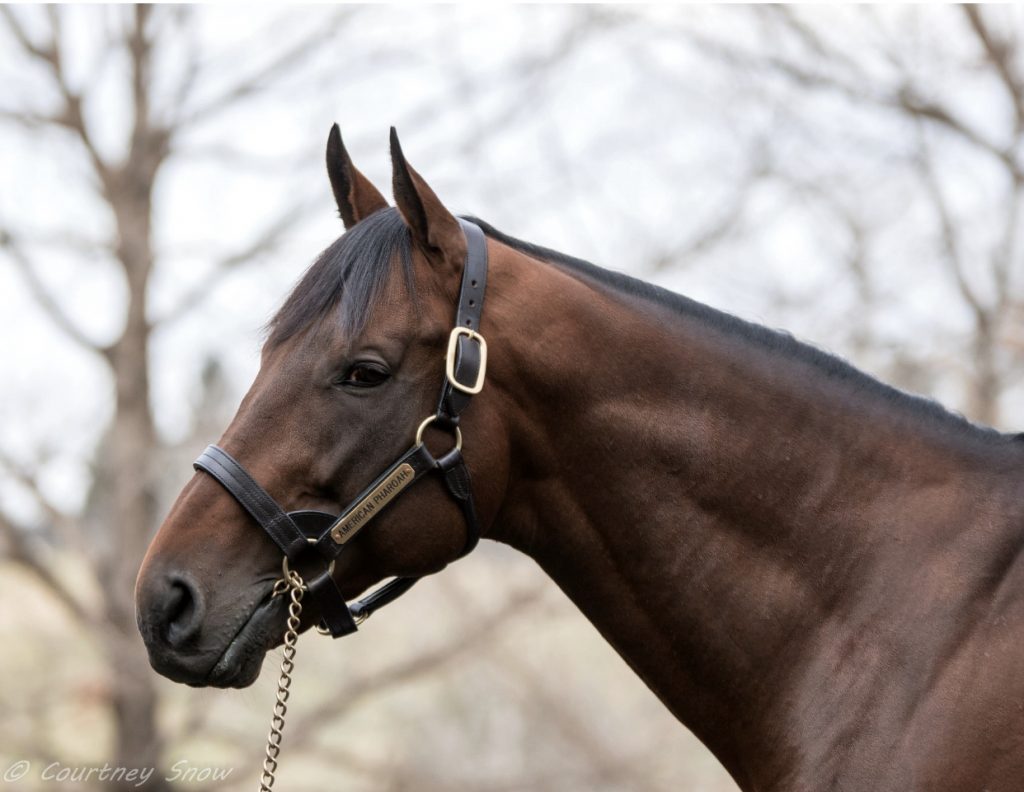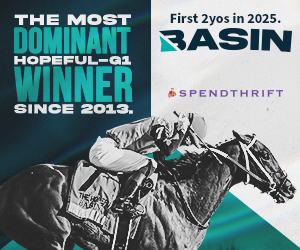

I hope you all enjoy this first column for Past the Wire by Nick Costa. Nick is a long time student of the game and from time to time will be bringing some thoughts to Past the Wire. You can find Nick on FaceBook especially in most of the horse racing groups. Nick thought about all the second place finishers to the Triple Crown Kentucky Derby winners who get lost in the shuffle and went back and gave them all their due. It is interesting part of racing nobody has really touched on much. Enjoy this look back at some history in the Sport of Kings.
Kentucky Derby winners, their names are forever etched in thoroughbred history. Most of us avid racing fans, when asked, are pretty good at recalling the ‘Run for the Roses’ winner in a given year during our lifetime. But, when we are questioned who finished second in that same Derby, probabilities skyrocket that Siri or Google will have to be called upon to find out who the runner-up was.
Eleven of our Kentucky Derby winners have gone on to Triple Crown glory, but the Triple Crown is an afterthought. A horse must win that all-important first race, the Kentucky Derby.
The focus here is on those horses that finished second to Derby winners that went on to capture the Triple Crown.
As you will read, some very good equines with solid credentials played second fiddle on the first Saturday in May.
- 2015 – American Pharoah – Firing Line – The Kentucky Derby was the hardest of the three Triple Crown races for American Pharoah to win. Firing Line raced in second behind Dortmund, before taking a brief lead, then relinquished it back to that rival. As the field turned for home, American Pharoah joined the fray and Firing Line dug in and battled between the two until inside the final sixteenth when Dortmund could no longer keep up. With approximately 50 yards to the wire, American Pharoah finally edged past a stubborn Firing Line to win by a length.
- 1978 – Affirmed – Alydar – There has not been a horse racing rivalry in the last 40 years that comes remotely close to this one. You can’t say one name without mentioning the other. The two rival heavyweights, forever linked together as one, had plenty of experience fighting it out against each other well before Derby Day. They had met six times as juvenile colts in 1977, with Affirmed winning 4 of the races. But the best was yet to come. In the 1978 Kentucky Derby, Preakness and Belmont Stakes, Affirmed and Alydar raced against each other for nearly four miles combined, with just a mere two lengths separating them. The biggest margin of victory came in the Kentucky Derby, when Affirmed triumphed by 1 ½-lengths. Alydar is the only horse to finish second in all three Triple Crown events.
- 1977 – Seattle Slew – Run Dusty Run – If it had not been for Seattle Slew, Run Dusty Run, might have won the Eclipse Award for 2-year old champion. The son of Dust Commander, the 1970 Kentucky Derby winner, Run Dusty Run raced nine times as a juvenile, winning six, including multiple graded stakes. By contrast, Seattle Slew had started just three times as a 2-year old, winning all three times, but it was his victory in the Champagne Stakes that sealed the Eclipse for the colt. Sent off as second choice in the Derby at 5-1, Run Dusty Run raced in fourth-place until the far turn when he made his bid and mounted a late charge through the stretch, but couldn’t catch Seattle Slew who won by nearly two-lengths. Run Dusty Run competed in all three Triple Crown races. In the Preakness, he was second again and then finished third in the Belmont.
- 1973 – Secretariat – Sham – From the outset of the year, Sham was cruising along in California. After winning the Santa Anita Derby in 1:47 flat, equaling the stakes record, he shipped east to face American icon, Secretariat, in the Wood Memorial which served as the final Kentucky Derby prep for both horses. Neither horse won, but Sham out finished Secretariat that day at Aqueduct. It would be the only time Sham would get the best of ‘Big Red’ as he was often referred as. In Louisville, as the Derby field rounded the final bend, Sham led Secretariat by 2 ½-lengths heading into the homestretch. But ‘Big Red’, who had exhibited multiple moves from last place early in the race to challenge for the lead, now began to display his superiority. Once Secretariat caught up, Sham tried in vain to match strides in the stretch, but Secretariat was moving too fast and proved too powerful to fend off, winning by 2 ½-lengths. The same margin separated the pair in the Preakness Stakes two weeks later. In a different year, maybe Sham would be remembered as a Derby winner. We will never know. What we do know is, Sham will be remembered as second best to a Superhorse.
- 1948 – Citation – Coaltown – These two formidable Calumet Farm stablemates sired by Bull Lea, practically kept the opposition away, as only four challengers showed up to face the daunting duo. It was just a matter of which horse Calumet was going to win with. Citation had built up an impressive resume, winning 8 of 10 races, many of them stakes. However, Coaltown was a star in his own right. He had won the Blue Grass Stakes prior to arriving at Churchill. If anyone could beat Citation, it was he. Some of the local media and fans viewed Coaltown as the better horse. Even Citation’s jockey, Eddie Arcaro, had his doubts if his mount could beat Coaltown. Blazing speed was Coaltown’s forte and he used it to open up a six-length lead down the backstretch. As the horses went into the turn for home, Arcaro called upon Citation and the horse responded. Citation steadily gained on his brother and soon they were stride for stride down the stretch, before Citation edged ahead and was gone, winning comfortably by nearly four lengths.
- 1946 – Assault – Spy Song – As a juvenile, Spy Song, won 3 of 4 starts, including the Arlington Futurity and also set a track record for four-and-a-half furlongs. He was ranked fourth among American 2-year-old males of 1945. In front of 100,000 people, which at the time was a record Derby crowd, and the largest crowd ever to assemble at an American racetrack, Spy Song was away quickly at the start and was in the lead as the horses thundered by the stands the first time. As they rounded the far turn, Spy Song was passed by Assault along the inside. From that point on, there was no doubt about the outcome as Assault would go on to win by eight lengths, tying the largest margin of Derby victory shared by three others.
- 1943 – Count Fleet – Blue Swords – Finishing second in the Kentucky Derby may have been passed on to Blue Swords through bloodlines as his grandsire, Black Servant, was runner-up in the 1921 edition. Blue Swords started 18 times in his two-year old season, winning five and twice placing second and third. Flashing that resume, the colt was regarded as second choice to Count Fleet in the Kentucky Derby future books. The word ‘second’ became a stigma that haunted Blue Swords in his three-year old season when facing Count Fleet. The best the colt could muster against his superior rival were three second place finishes, the two biggest being the Derby and Preakness.
- 1941 – Whirlaway – Staretor – When the race began, Staretor, an extreme outsider at odds of 46-1, broke sharp out of the gate, but was wrangled back and allowed to settle, racing in seventh-place in the field of eleven after a half mile had been completed. At the mile marker, Staretor launched his bid and by the top of the stretch, he was in with a shot at Derby fame along with four other horses. The crowd sensed an exciting stretch run was about to develop. And they were right, but it didn’t unfold the way they expected. Whirlaway, who had revved up his engine midway on the backstretch and had made up more than a dozen lengths, was now getting into the race. He darted through a gap between rivals and shot straight to the lead with a ferocious burst of speed, extending his advantage with each stride and rocketing under the finish line by eight lengths. Staretor ran a fine race and saved the place spot by a neck.
- 1937 – War Admiral – Pompoon – At age two, Pompoon dominated the juvenile division winning 6 of 8 starts. He won the Belmont Futurity and defeated War Admiral in the National Stallion Stakes. For his accolades of 1936, he was named American Champion two-year colt. In the 63rd Kentucky Derby, War Admiral turned the tables and got the better of Pompoon by going wire-to wire. Pompoon, one of 19 challengers that saw the backside of the winner throughout the race, eventually ended up finishing the closest, falling short by less than two lengths. In the Preakness, Pompoon went neck to neck against War Admiral, but the Derby winner prevailed again, only this time winning by a nose.
- 1935 – Omaha – Roman Soldier – The betting crowd showed strong support for both horses. The endorsement for Omaha was expected, but Roman Soldier as the fourth betting choice was a bit of a surprise. However, given the result of the race, the black colt justified the backing of his supporters with a very determined run from eleventh-place at the half-mile pole to the wire, falling short to Omaha by a little more than a length.
- 1930 – Gallant Fox – Gallant Knight – More than just in name, Derby Day was truly a gallant day. The 1930 edition was the first to be broadcast over a P.A. system to a crowd, and the first to use a starting gate, which replaced the web barrier that was used for years. Interestingly, Gallant Fox and Gallant Knight were side by side in the new stall machine. Although Gallant Knight made a brief challenge in the stretch, his proximity to Gallant Fox in the gate was the closest he got to the Derby winner on this afternoon.
- 1919 – Sir Barton – Billy Kelly – Sometimes the best laid plans go astray, and that’s what happened here. Despite the fact Sir Barton was a maiden, his owner, J.K.L. Ross, decided to enter him in the Kentucky Derby. As satisfying as the colt’s second place finish in the Futurity at Belmont Park was in his juvenile finale, it certainly was not the primary reason for McGrath to send Sir Barton to Louisville. Instead, it was mainly because Ross wanted a ‘rabbit’ for his other runner, Billy Kelly, champion two-year old of 1918. Sir Barton was to carve out a fast pace in the hope it would tire out the highly regarded favorite, Eternal. The first part of the plan worked to perfection as Eternal chased the front-running Sir Barton and gave way after the three-quarter mark. The other part of the plan did not materialize, as Sir Barton was not running out of gas. Billy Kelly, not far behind during the race, then proceeded to take up the chase after his stablemate, who responded by drawing off and winning by five lengths.



